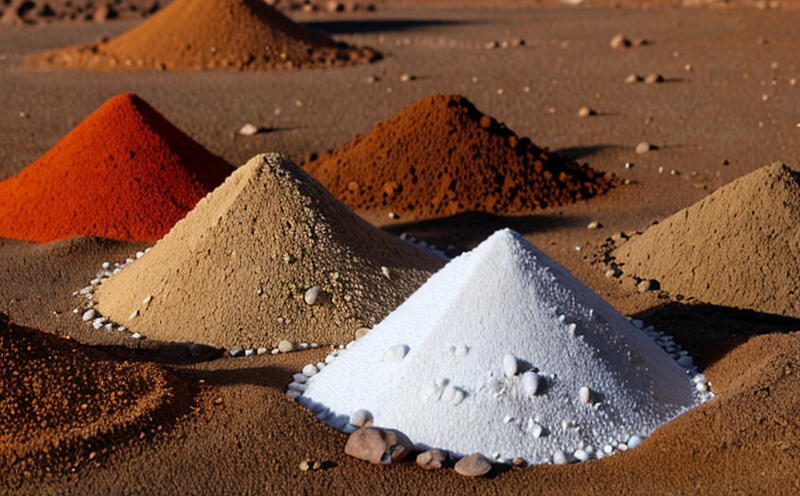DIN 22022 Chemical Analysis of Rare Earth Concentrates Testing
The DIN 22022 standard provides a comprehensive framework for the chemical analysis of rare earth concentrates. This test is essential in ensuring that the quality and purity of rare earth materials meet industry standards, thereby enhancing product reliability and performance across various sectors.
Rare earth elements (REEs) are critical to numerous industries due to their unique properties, making them indispensable in technologies ranging from electronics to renewable energy. The testing and analysis of these concentrates are crucial for quality control, ensuring that the materials meet specific purity levels required by downstream processes or end-user applications.
The DIN 22022 standard covers a wide range of chemical analyses aimed at determining the elemental composition of rare earth concentrates. This includes quantifying the concentrations of various rare earth elements such as lanthanum (La), cerium (Ce), praseodymium (Pr), neodymium (Nd), samarium (Sm), europium (Eu), gadolinium (Gd), terbium (Tb), dysprosium (Dy), holmium (Ho), erbium (Er), thulium (Tm), ytterbium (Yb), and lutetium (Lu). The analysis also includes trace elements, oxides, and impurities that can affect the performance of end products.
The testing process involves several critical steps. Specimens are prepared by thoroughly homogenizing samples to ensure uniformity, followed by digestion using appropriate acids such as nitric acid or hydrofluoric acid, depending on the sample matrix. The digested solutions undergo various separations and precipitations to isolate individual rare earth elements for precise quantification.
Instrumentation plays a vital role in this testing process. Inductively Coupled Plasma Mass Spectrometry (ICP-MS) is widely used due to its high sensitivity and accuracy, especially for trace element analysis. Flame Atomic Absorption Spectroscopy (FAAS) can also be employed for certain elements where higher detection limits are acceptable. X-ray fluorescence spectrometers offer another option, particularly useful for non-destructive testing of bulk materials.
The DIN 22022 standard specifies strict acceptance criteria to ensure that the chemical composition of rare earth concentrates falls within specified ranges. Compliance with these standards is crucial not only for quality assurance but also for regulatory compliance in various regions.
Scope and Methodology
| Parameter | Description |
|---|---|
| Digestion Procedure | Method for breaking down the sample into soluble components. |
| Separations and Precipitations | Steps to isolate individual rare earth elements from the digested solution. |
| Instrumentation | List of analytical instruments used in the testing process. |
| Acceptance Criteria | The specified ranges for elemental concentrations and impurities. |
The DIN 22022 standard outlines detailed procedures for each step, ensuring that tests are conducted consistently across different laboratories. This consistency is vital for maintaining the integrity of rare earth materials in global supply chains.
Industry Applications
The results of DIN 22022 chemical analysis play a pivotal role in various industries, including:
- Electronics and consumer goods: Ensuring the reliability and performance of products like smartphones, laptops, and other electronic devices.
- Renewable energy: Supporting the production of wind turbines and photovoltaic solar panels that require high-purity rare earth elements for optimal efficiency.
- Magnetics: Manufacturing strong permanent magnets used in electric vehicles and industrial machinery.
- Catalysis: Developing catalysts for chemical processes in petrochemical industries, helping to reduce environmental impact.
In each of these sectors, the precision and accuracy provided by DIN 22022 testing ensure that materials are suitable for their intended applications, thereby enhancing product performance and reliability.
Why Choose This Test
Selecting DIN 22022 chemical analysis for rare earth concentrates offers several advantages:
- Precision and Accuracy: Ensures that the elemental composition of the concentrate is accurately determined, facilitating precise control over production processes.
- Regulatory Compliance: Helps ensure compliance with international standards and local regulations governing the use of rare earth materials.
- Quality Assurance: Provides a reliable means to monitor the quality of raw materials used in manufacturing processes, leading to consistent product performance.
- Cost Efficiency: By ensuring that only high-quality materials are used, DIN 22022 testing can help reduce waste and production costs.
In conclusion, DIN 22022 chemical analysis is a critical tool for maintaining the quality and purity of rare earth concentrates, which is essential for meeting industry standards and regulatory requirements across various sectors.





